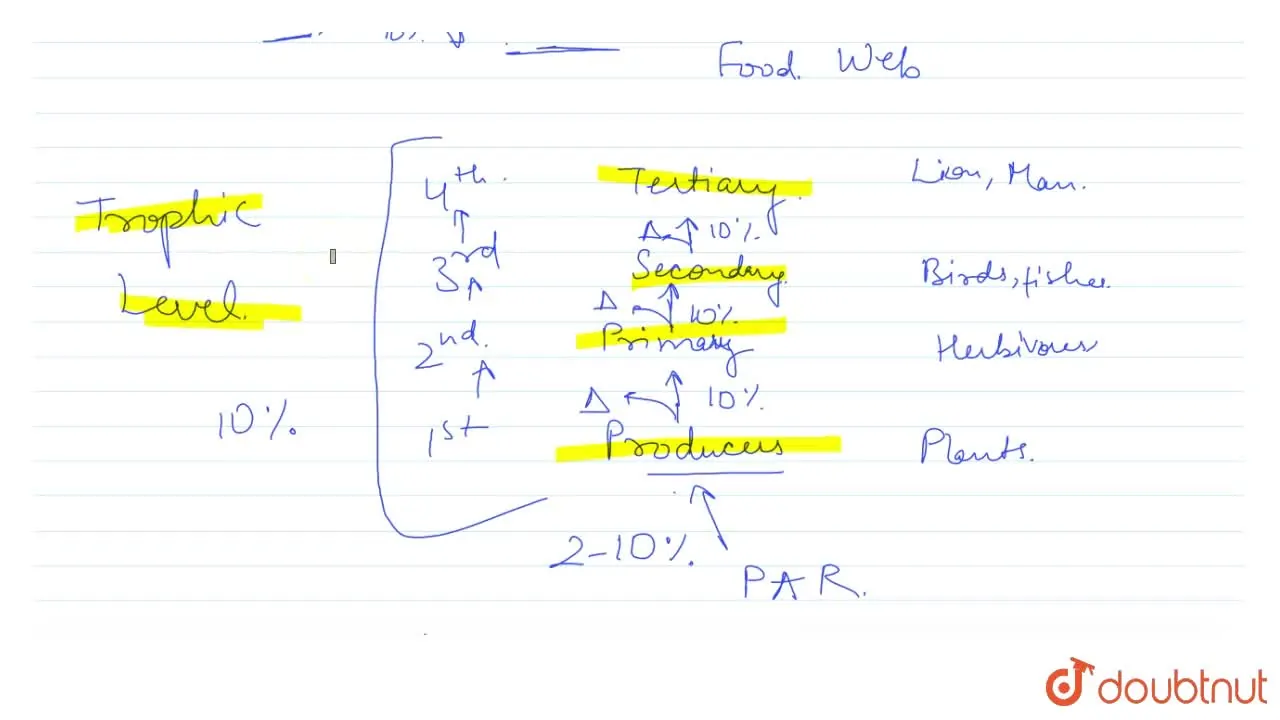Energy Flow
Energy Flow
In this chapter, we will try to understand the concept of energy flow in an ecosystem which proves to be a very important topic of Biology. You would be able to get the right idea on the energy flow in the ecosystem as well as the energy flow model. This would make you understand the concept in the best way.
What is Energy Flow in an Ecosystem?
The main source of energy which is required by all living organisms is the chemical energy of food. This energy gets transmitted to different trophic levels along the food chain. It is to be noted that this energy flow is based on two different laws of thermodynamics:
- First law of thermodynamics states that energy can neither be created nor destroyed, but it can only change from one form to another.
- According to the second law of thermodynamics, energy is transferred more and more of it is wasted.
Energy Flow in Ecosystem
One of the prime factors that support the survival of a great number of organisms is the energy flow in the ecosystem. Solar energy proves to be the primary source of energy for almost all organisms on earth. You might know that we receive less than 50 per cent of the sun’s effective radiation on earth. When we say effective radiation, we want to mean that the radiation which is used by plants to carry out photosynthesis.
Photosynthesis
Most of the sun’s radiation that falls on the earth gets reflected back into space by the earth’s atmosphere. This radiation which is caused is termed as the Photosynthetically Active Radiation (PAR). We receive about 40 to 50 percent of the energy having Photosynthetically Active Radiation. Out of this, plants used only around 2-10 per cent for the process of photosynthesis. So, in this case, the percent of PAR helps in supporting the entire world. This is due to the fact that plants are the producers in the ecosystem. Here, every other organism is either directly or indirectly dependent on them to survive. It is through the food chain and food web that the energy flow takes place. Plants, being the producers begin to absorb sunlight with the help of the chloroplasts, it gets transformed into chemical energy in the process of photosynthesis during the process of energy flow in the ecosystem.

This energy is found to be stored in various organic products in the plants, which, in turn, passes on to the primary consumers in the food chain. This occurs when the herbivores consume (primary consumers) the plants as food. This is followed by secondary consumers. When the carnivores ingest the herbivores of the first order (secondary consumers), further degradation occurs. Finally, when tertiary consumers consume the carnivores, energy begins to get degraded again. Thus, it can be seen that the energy flow is unidirectional in nature. Coming to the food chain, the energy flow follows the 10 percent law. This law states that only 10 percent of energy is transferred from one trophic level to the other while the rest is lost into the atmosphere.
Related Videos:
- Major producers in terrestrial ecosystem
- Mention the name of two major decomposers
- Ecological Pyramids
- Components of an ecosystem
- Give an account of energy flow in an ecosystem
Trophic Level
We can arrange the producers and consumers in the ecosystem into different feeding groups which are known as trophic level or the feeding level.
- The first trophic level is represented by the producers (plants)
- The second trophic level is represented by the herbivores (primary consumers)
- The third trophic level is represented by the Primary carnivores (secondary consumers)
- The last level is represented by the top carnivores (tertiary consumers)
Food Chain
There are three different types of food chains in the ecosystem, which have been explained below:
Grazing food chain (GFC)
This happens to be the normal food chain that is observed in plants which are the producers and the energy flows from the producers to the herbivores (primary consumers), then to carnivores (secondary consumers) and so on.

Saprophytic or Detritus food chain (DFC)
In this type of food chain, the lowermost level of the food chain is occupied by the dead organic matter which is followed by the decomposers and so on.
Parasitic food chain (PFC)
In this type of food chain, large organisms is either the producer or the consumer who is exploited and therefore the food passes to the smaller organism.
Important Chapters:


Similar Questions
Which of the following statement(s) regarding energy flow is/are false?
I. The detritus food chain begins with dead organic matter.
II. In aquatic ecosystem, detritus food chain is the major conduit for energy flow.
III. In terrestrial ecosystem a larger fraction of energy flows through grazing food chain.
IV. Producers belong to the first trophic level of the food chain.View SolutionThe sun's energy powers the flow of _____ and ______ on the earth.
View SolutionFlow OF Energy Biological Magnification
View SolutionHeat energy will flow from our body to the surrounding if
View SolutionIn marine water ecosystem most of the energy in flows through :
View SolutionIn hydroelectric dams the _________ energy of flowing water is transformed into electric energy.
View SolutionIn hydroelectric stations, the potential energy of flowing water changes into electric energy.
View SolutionThe energy of the flowing water cannot be used to produce electricity.
View SolutionHydropower plants converts the kinetic energy of flowing water into_______
View SolutionA hydroelectric power plant produces energy from flowing water.
View Solution


